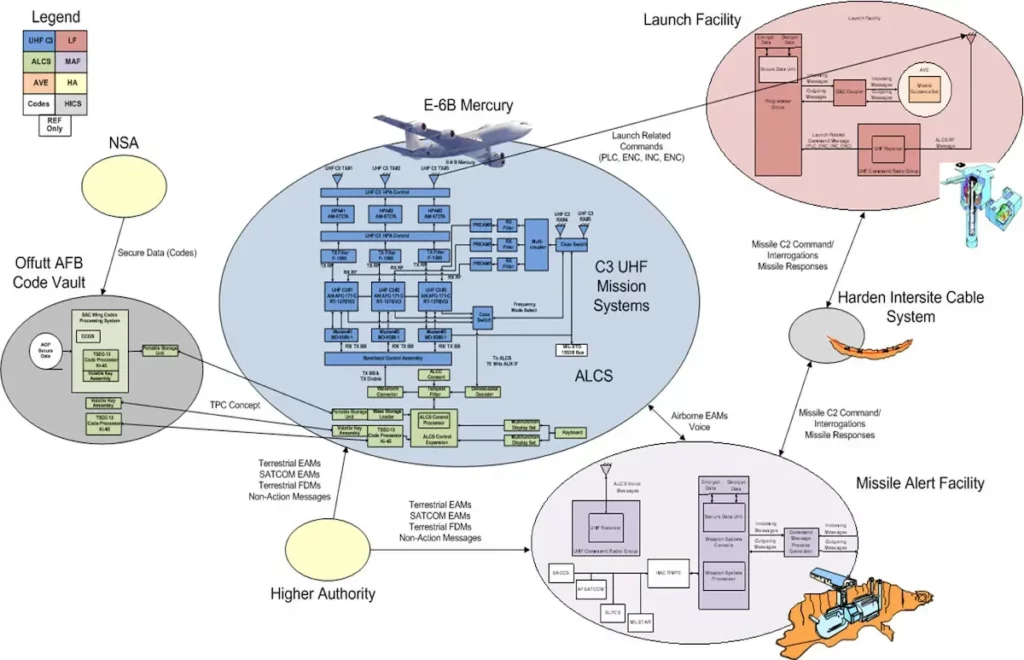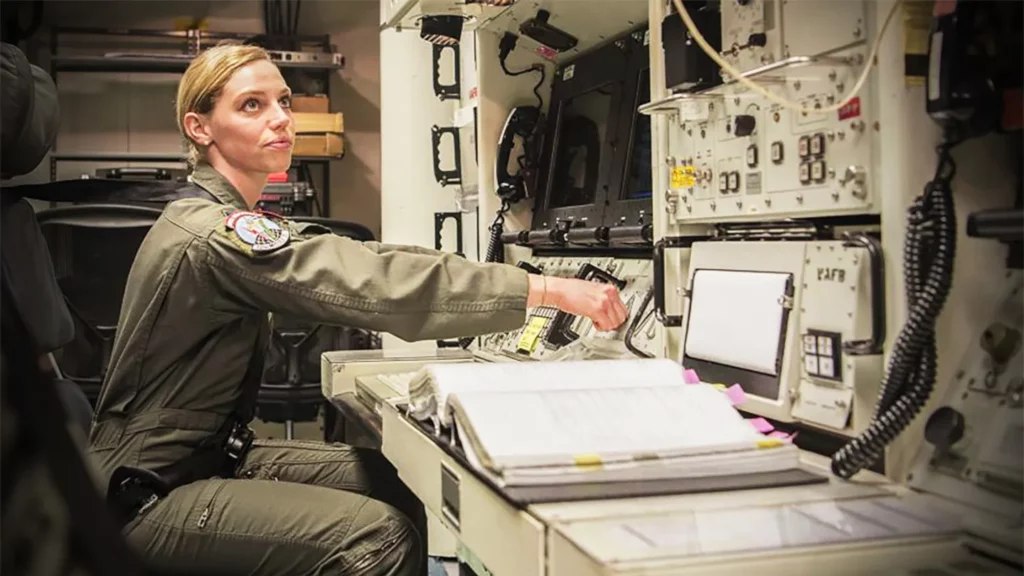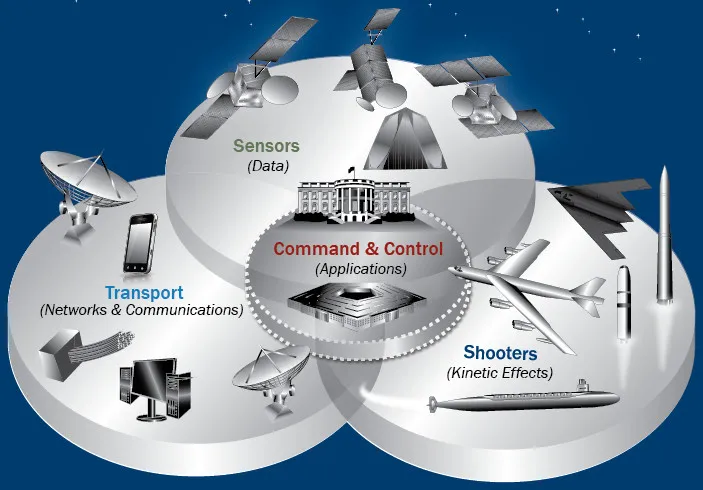Pese a que expertos a nivel global, plantean que la incorporación de Inteligencia Artificial (IA) en los arsenales nucleares puede ocasionar una catástrofe de alcance global, autoridades de la US Air Force y la US Space Force afirman que la IA jugará un importante papel, casi imprescindible, al incorporarse en un futuro cercano, en e muchos de los sistemas de control, gestión y mantenimiento del armamento nuclear. La IA tiene el potencial de acelerar considerablemente el proceso de toma de decisiones, asegurando que las órdenes lleguen de la forma más rápida y segura posible, al destinatario más indicado para cumplirlas. Pero la IA también puede ser utilizada para asistir a sectores con responsabilidades en gestión de información e inteligencia, así como áreas de mantenimiento y logística.
While it has long been a world-ending threat in science fiction, U.S. Air Force and Space Force officials see artificial intelligence (AI) playing important, if not critical roles in the command and control enterprise at the heart of America’s nuclear deterrent capabilities.
AI has the potential to help speed up decision making cycles and ensure that orders get where they need to go as fast and securely as possible. It could also be used to assist personnel charged with other duties from intelligence processing to managing maintenance and logistics. The same officials stress that humans will always need to be in or at least on the loop, and that a machine alone will never be in a position to decide to employ nuclear weapons.
A group of officers from the Air Force and Space Force talked about how AI could be used to support what is formally called the Nuclear Command, Control, and Communications (NC3) architecture during a panel discussion at the Air & Space Forces Association’s 2025 Warfare Symposium, at which TWZ was in attendance. The current NC3 enterprise consists of a wide array of communications and other systems on the surface, in the air, and in space designed to ensure that a U.S. nuclear strike can be carried out at any time regardless of the circumstances.

“If we don’t think about AI, and we don’t consider AI, then we’re going to lose, and I’m not interested in losing,” Maj. Gen. Ty Neuman, Director of Strategic Plans, Programs and Requirements at Air Force Global Strike Command (AFGSC), said yesterday. “So we absolutely have to figure this out.”
“AI has to be part of what the next generation NC3 [architecture] is going to look like. We have to be smart about how we use that technology,” Neuman continued. “Certainly the speed is probably the most critical thing. There’s going to be so much data out there, and with digital architectures, resilient architectures, and things like that, we have to take advantage of the speed at which we can process data.”
Neuman also outlined a role for AI to help with secure communications.
“The way I would envision this actually being in the comm world, would be using AI to – if a message is being sent or a communication is being sent from the National Command Authority to a shooter, AI should be able to determine what is the fastest and most secure pathway for me to get that message from the decision maker to the shooter,” the general explained. “As a human operator on a comm system in today’s world, I will not have the ability to determine what is the most secure and safest pathway, because there’s going to be, you know, signals going in 100 different directions. Some may be compromised. Some may not be compromised. I will not be able to determine that, so AI has to be part of that.”
The National Command Authority is the mechanism through which the president of the United States would order a nuclear strike, a process you can read more about in detail here. America currently has a nuclear triad of “shooters” consisting of B-2 and B-52 bombers, silo-based Minuteman III intercontinental ballistic missiles (ICBM), and Ohio class ballistic missile submarines. Air Force F-15E Strike Eagle combat jets, as well as at least some F-35A Joint Strike Fighter and F-16 Viper fighters, can also carry B61 tactical nuclear bombs.

AI could be valuable in the NC3 enterprise beyond helping with decision making and communications, as well.
“We can analyze historical data and identify trends, and those AI tools could be used in a predictive manner. We could use it on our systems to proactively manage just like our system maintenance, be able to plan the upgrades to the system, and reducing the risks to unexpected interruptions or disruptions,” Space Force Col. Ryan Rose, Deputy Director for Military Communications and Positioning, Navigation, and Timing (PNT) at Space Systems Command, another one of the panelists, said. “Additionally, the data or trends related to cybersecurity, or being able to see what our adversaries are up to, could also be useful for decision makers.”
Though made just in passing, Rose’s comment about cybersecurity offers a notable point about how AI could be useful for helping to defend networks like the NC3 architecture, both within the cyber domain and across the radiofrequency (RF) spectrum.
The nuclear decision-making space has always been one with short timetables, including when it comes to securely disseminating nuclear strike orders. For decades now, it has been understood that the president will have at best tens of minutes, if not substantially less, to explore available courses of action and pick one or more to execute once an incoming nuclear threat has been spotted and positively identified. Many of those courses of action would only be viable within certain time windows and any disruption in the decision-making process would have devastating consequences.
There are also already efforts to integrate AI-driven capabilities into other decision-making spaces, including at the tactical level, across the Department of Defense. AI tools are already being used to help monitor domestic airspace and processing intelligence, as well as assist with maintenance, logistics, and other sustainment-related functions.
At the same time, there have been concerns about the accuracy of the models that underpin existing AI-driven capabilities and the idea of automating anything to do with nuclear weapons is particularly sensitive. Science fiction and other ends of popular culture are also full of stories where turning over aspects of America’s nuclear deterrent arsenal to a machine leads to an apocalypse or risks doing so. The 1983 movie WarGames and the Terminator franchise – starting with the eponymous film in 1984, but better emphasized by the opening scene to the 1991 sequel Terminator 2: Judgment Day 2 – are prime examples.
Fuente: https://www.twz.com


